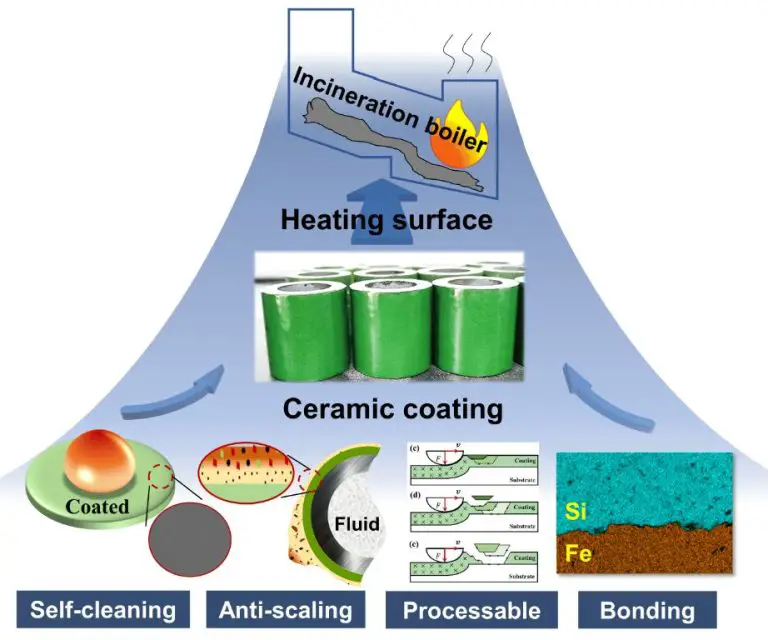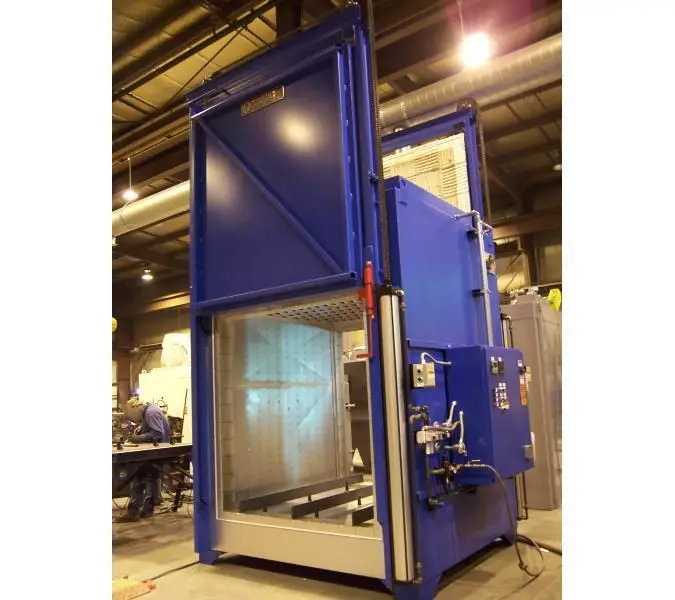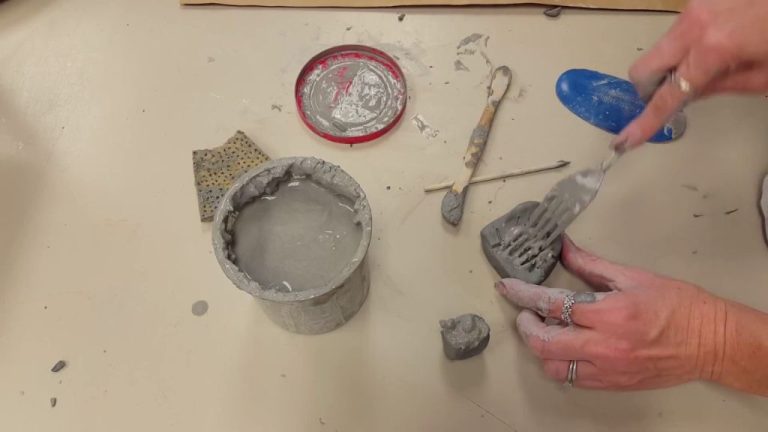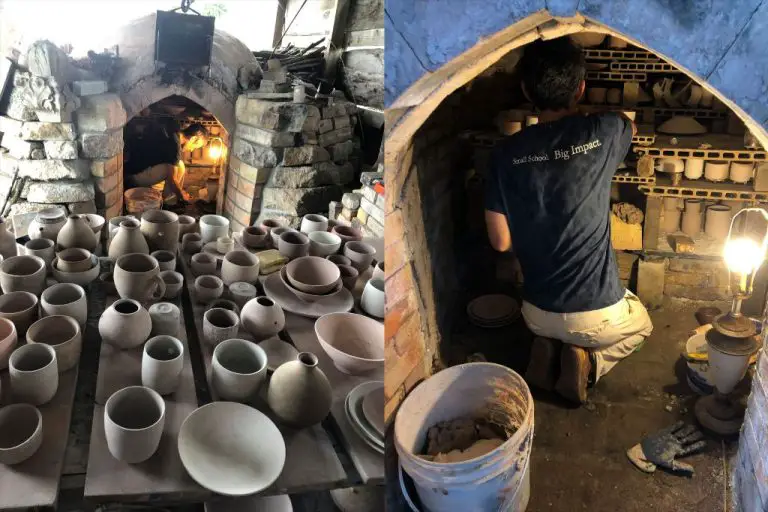Can Coyote Glazes Be Fired To Cone 10?
Coyote glazes are a popular brand of studio pottery glazes manufactured by Coyote Clay in Colorado. These glazes are designed to mature and achieve their intended effects at cone 5-6 oxidation firing temperatures, which is around 2165°F-2185°F (1185°C-1191°C). Coyote offers dozens of glaze colors and effects including celadons, satin mattes, whites, and more.
In pottery, standardized pyrometric cones are used to measure firing temperatures inside a kiln. The cones are formulated to bend and melt at specific temperatures, indicating when a desired temperature has been reached. Cones are numbered from 022 to 14, with higher numbers denoting higher temperatures. Cone 10 represents approximately 2381°F (1306°C).
This leads to the key question – can Coyote glazes, typically fired to cone 5-6, be safely fired up to cone 10 temperatures? This article will examine the factors involved.
Reference: https://coyoteclay.com/BuyCone6.html
What Are Coyote Glazes?
Coyote glazes were developed in the 1970s by Mark Shapiro and Fran Konstantin at The Clay Coyote studio in Montana[1]. They are mid-range ceramic glazes known for their rich colors, variegation, movement, and breaking effects. Coyote glazes are made from raw materials like feldspars, quartz, zinc oxide, dolomite, kaolin, and colorants. Unlike many commercial glazes, Coyote glazes do not contain toxic ingredients like cadmium, lead, or barium[1].
Coyote glazes are typically fired in the cone 5-7 range (2165-2232°F or 1185-1220°C). When fired at these mid-range temperatures, Coyote glazes display vivid colors, crackle effects, and interesting surface textures. The fluid nature of Coyote glazes allows them to move and break over textured surfaces and interact with underlying glazes. When fired too hot or too cold, Coyote glazes may not achieve their signature look and effects.
Firing Temperatures and Cones
To accurately measure firing temperatures in pottery kilns, ceramicists use pyrometric cones. Pyrometric cones are small, precisely formulated pyramidal shapes that melt at specific temperatures. As a kiln is firing, cones are placed inside and act as visual indicators of when certain temperatures are reached based on the melting and bending of each cone.
The most commonly used cone ranges in ceramic firing include:
– Cone 06: 1659-1683°F (899-917°C)
– Cone 04: 1627-1651°F (885-899°C)
– Cone 02: 1587-1598°F (861-870°C)
– Cone 1: 2155-2167°F (1179-1187°C)
– Cone 6: 2240-2264°F (1226-1240°C)
– Cone 10: 2381-2413°F (1306-1323°C) (source: https://www.clay-king.com/kilns/pyrometric_cone_temperature_chart.html)
Higher cone numbers correspond to higher temperatures. Most stoneware clays and glazes are formulated for firing in the cone 4-10 range. Earthenware clays and glazes are generally fired at lower cone temperatures from 06 to 02.
Typical Firing Range for Coyote Glazes
Coyote glazes are designed to be fired at low to mid-range temperatures, typically between cone 06 and cone 01 [1]. The manufacturer recommends firing most Coyote glazes between cone 5 and cone 6 for optimal results [2].
Cone 06 represents a firing temperature of 1728°F, while cone 01 reaches 2134°F. Coyote glazes are formulated to mature and develop their signature smooth, satiny surfaces within this low-fire range. Firing at the cooler end, between cone 06 and cone 04 (1646°F to 2034°F), will produce softer satin textures and brighter colors. Firing toward cone 1 may yield a more durable glaze finish but with some loss of surface sheen.
Review glaze test tiles after firing between these recommended temperature ranges. Look for signs of proper melt fluidity, surface texture, and color development based on the product description for optimal results. Adjust firing higher or lower as needed within the typical cone 06 to cone 01 range.
Factors to Consider with High Temp Firing
When firing glazes to higher temperatures like cone 10 (2345°F), there are some important factors to consider:
High temperatures can increase the potential for glaze defects like pinholing, cracking, and crazing 1. As glazes heat up rapidly to higher peak temperatures, gases can get trapped in the glaze and expand, causing small holes or pinholes. Thermal expansion differences between the glaze and clay body can also lead to cracking or crazing from excessive stress. Careful testing is needed to ensure the glaze and body have compatible thermal expansion.
Increasing the temperature significantly alters glaze chemistry and properties. Glazes are formulated to mature and melt properly at specific temperature ranges. As the temperature rises, more components begin to melt and flux, changing the glaze’s appearance, texture, and functional qualities like hardness and durability 1. The glaze may become too fluid and run off the piece, or too soft and easily scratched.
It’s important to test how an existing glaze recipe responds to higher temperatures before doing longer production firings. Look for signs of overfiring like pinholing, blistering, burnout of components, and excessive gloss. Adjust the recipe if needed by increasing quartz for stability or adding a flux like sodium or potassium feldspar to improve melting.
Experiences Firing to Cone 10
Many potters have had success firing Coyote glazes to cone 10. On Reddit, one potter shared their experience firing Coyote’s Enduro line to cone 10 with good results: “I love coyote glazes and their enduro-color line might be close to what you’re looking for. Many people see cone 10 as the pinnacle. That will increase durability…” (Source)
The Coyote glazes seem to hold up well to higher temperatures according to most accounts. As one potter commented on the Ceramic Arts Daily forums: “I fire Coyote to cone 10 oxidation with great results. I love the different variations, and I am looking forward to further experimenting with Coyote glazes.” (Source)
With proper testing and adjustment of glaze recipes, Coyote glazes can achieve their signature colors even when fired to higher temperatures. Many of Coyote’s production glazes are formulated to fire anywhere from cone 06 up to cone 10. However, firings to cone 10 may require modifying glaze chemistries and testing to account for increased melting.
Recommendations for Firing to Cone 10
Firing glazes to cone 10 can be done successfully but requires some adjustments to account for the higher temperatures. Here are some tips for increasing success when firing to cone 10:
Use a slower cooling cycle – Slow cooling is essential for cone 10 firing to allow glazes time to cool and solidify properly. Aim for a cooling rate of 100-150°F per hour. Cooling too quickly can cause glazes to crack or become matte.1
Apply thicker glaze coats – High temperatures can cause thinner glazes to crawl or become too fluid. Using 3-4 coats of glaze can help prevent this. Pay extra attention to edges and rims where glaze tends to be thinner.
Use kiln wash on shelves – The higher temperatures of cone 10 firing can cause glazes to adhere to kiln shelves. Applying a fresh coat of kiln wash helps prevent this.
Test fire on a small scale first – When using a new glaze or firing at cone 10 for the first time, test a few sample pieces before firing a whole kiln load. This allows you to check for any issues with fit or glaze flaws before committing larger works.
Example Glaze Recipes Rated for Cone 10
Coyote does offer some glaze recipes that are rated for high temperature firing up to cone 10. One popular option is their Liquid Black glaze (C-21) which produces a smooth, shiny black finish.
According to Coyote’s product information, Liquid Black can be fired between cones 06 and 10 with reliable results. It has a formulation of:
Gerstley Borate 43.3%
Red Iron Oxide 1.5%
Custer Feldspar 23.5%
Whiting 7.8%
Flint 23.5%
Bentonite 0.5%
For best results with Liquid Black at cone 10, it’s recommended to apply 2-3 thin coats on bisqueware and fire with plenty of air circulation. This allows volatiles to escape and prevents crawling or blistering. The final surface will have a glossy, smooth black finish. See this product page for examples.
Another Coyote cone 10 option is their popular Surfeit Green glaze (C-33). It has a striking blue-green color with nice surface quality at high fire. The recipe includes:
Gerstley Borate 46.2%
Red Iron Oxide 0.8%
EPK Kaolin 20.3%
Whiting 5.9%
Flint 26.8%
As with other high-fire glazes, apply thinly on bisqueware in multiple coats. Expect bright blue-green hues with a subtle silky matte surface when fired to cone 10. Always test new glaze recipes on test tiles before committing them to finished pieces.
Testing Your Own Recipes
If you want to test your own glaze recipes at cone 10 temperatures, it’s important to start with small test tiles first. Here are some key methods for testing glazes at higher temperatures:
Test on small tiles – Start by applying your test glazes to 1-2 inch square bisque tiles. This allows you to test multiple glazes without wasting a lot of materials. Make sure to label the back of each tile.
Start with reliable recipes – Try starting with glaze recipes that are known to fire well at high temperatures. Minor adjustments can then be made to fit your desired look and feel.
Watch for common high fire issues – Check for defects like pinholing, blistering, bubbling, and crawling which can occur more often at cone 10. Refine the recipe to correct any issues.
Test oxidation vs reduction – Try testing in both oxidation and reduction kilns if possible. Reduction can affect glaze colors and stability at high temps.
Consider multiple thicknesses – Test multiple dipped coatings from light to heavy. Higher temps may require thicker glaze coats.
Examine test results carefully – Look for signs of overfiring or underfiring and adjust temperature accordingly. Document glaze melt, surface texture, color, and any flaws.
Adjust and re-test as needed – Make small incremental changes to glaze recipes and re-test after each adjustment. Keep meticulous notes on each test iteration.
According to this source, be patient and persistent. Testing glazes at new temperatures requires an iterative approach.
Conclusion
In summary, Coyote glazes can generally be fired up to cone 10 temperatures, but there are some important factors to consider.
The key points are that Coyote glazes tend to flux more at higher temperatures, so glaze chemistry needs to be adjusted. It’s recommended to test small batches first to check for excessive running. Some specific Coyote glaze recipes, like Celedon matte and silky matte, are known to do well at cone 10. In general, semi-matte and satin glazes seem to handle cone 10 best.
When firing to higher temperatures, firing schedule, kiln atmosphere, glaze layering, and kiln load also impact results. While cone 10 is possible for many Coyote glazes with proper adjustments, best results are often achieved in the mid-range temperatures that Coyote designed their glazes for.
With small scale testing and tweaking of glaze recipes, cone 10 firing can be feasible for a wide range of Coyote glazes. However, factors like glaze chemistry, firing schedule, and kiln conditions need to be addressed to achieve good results at these higher temperatures.





